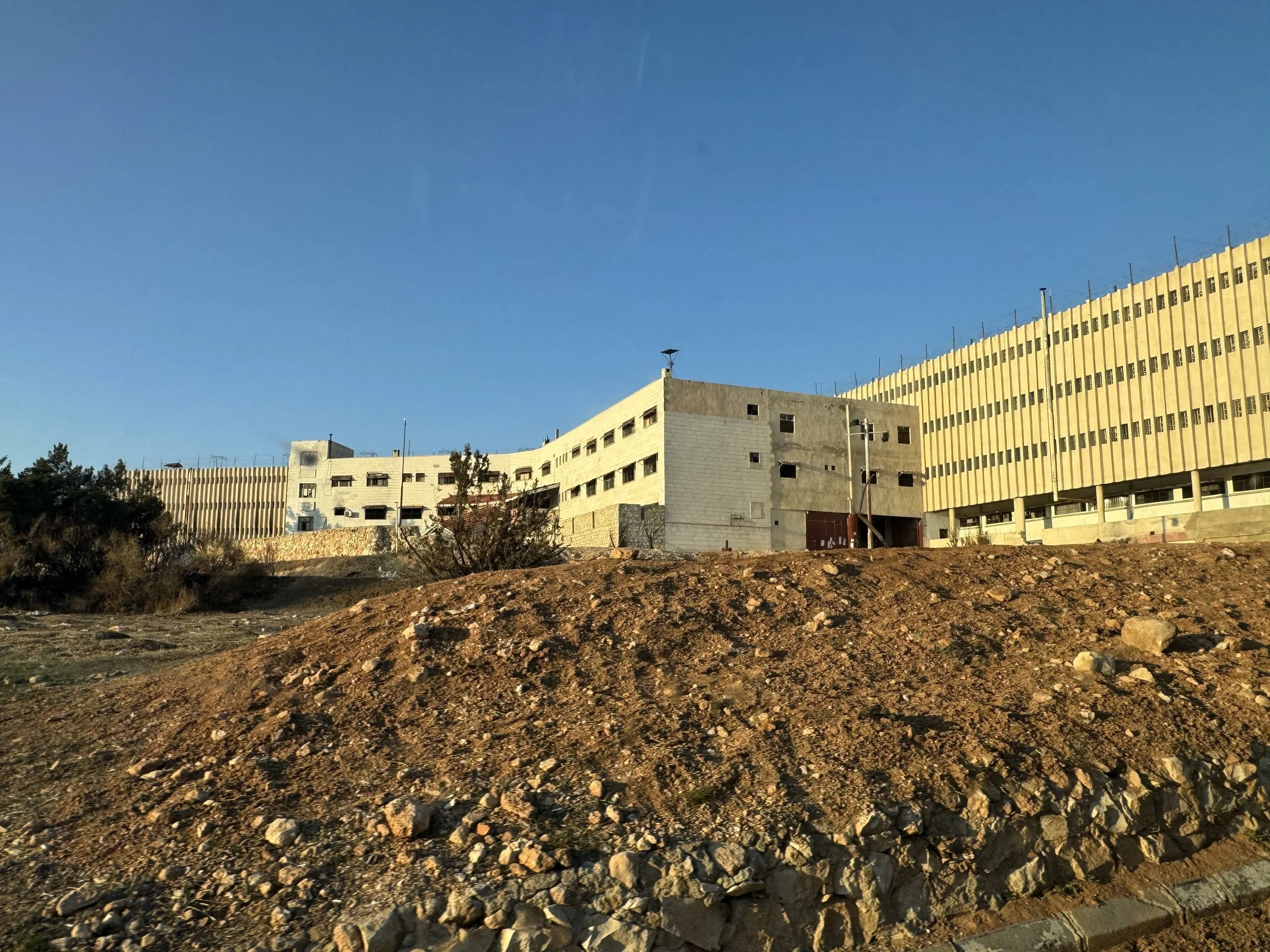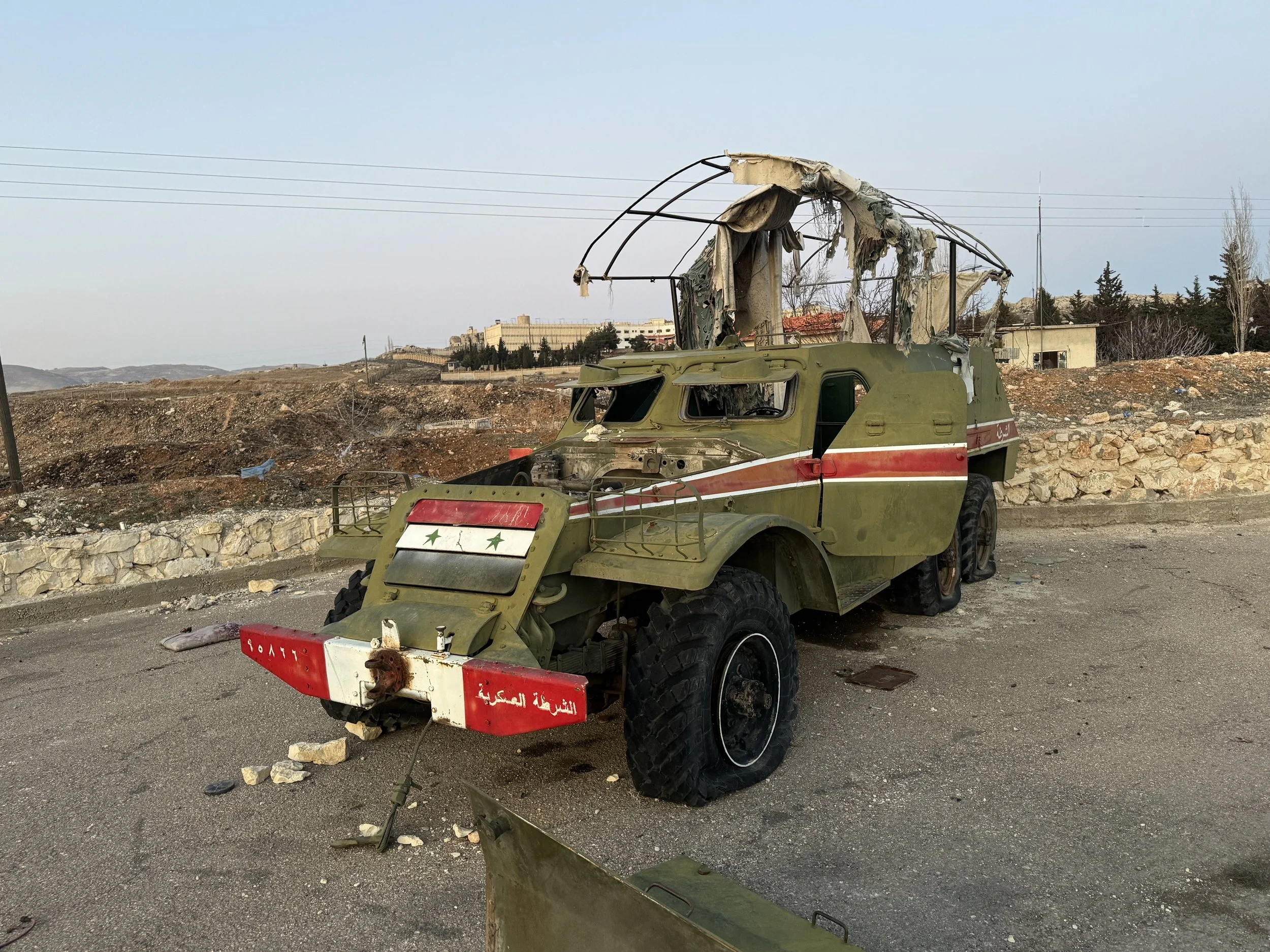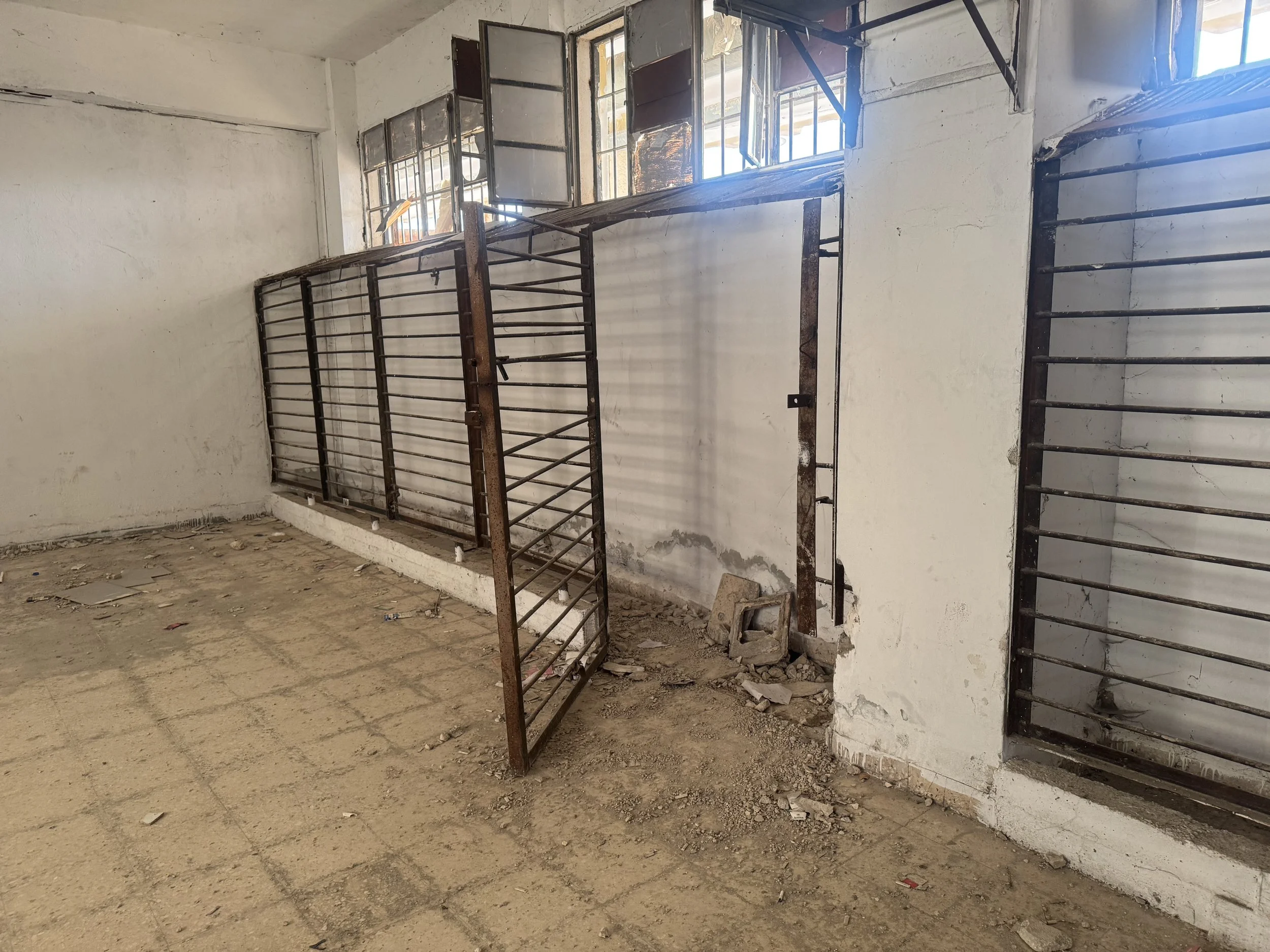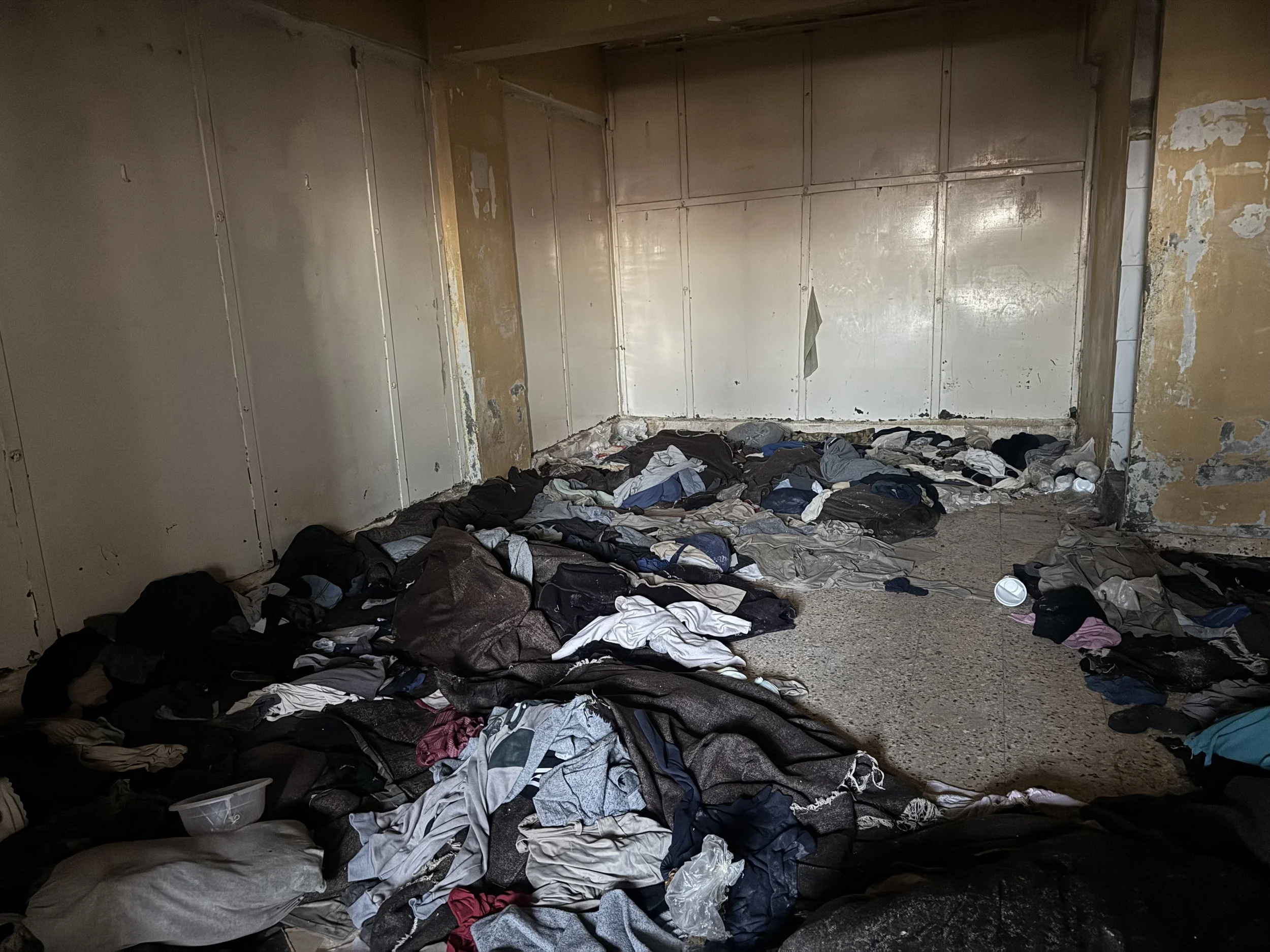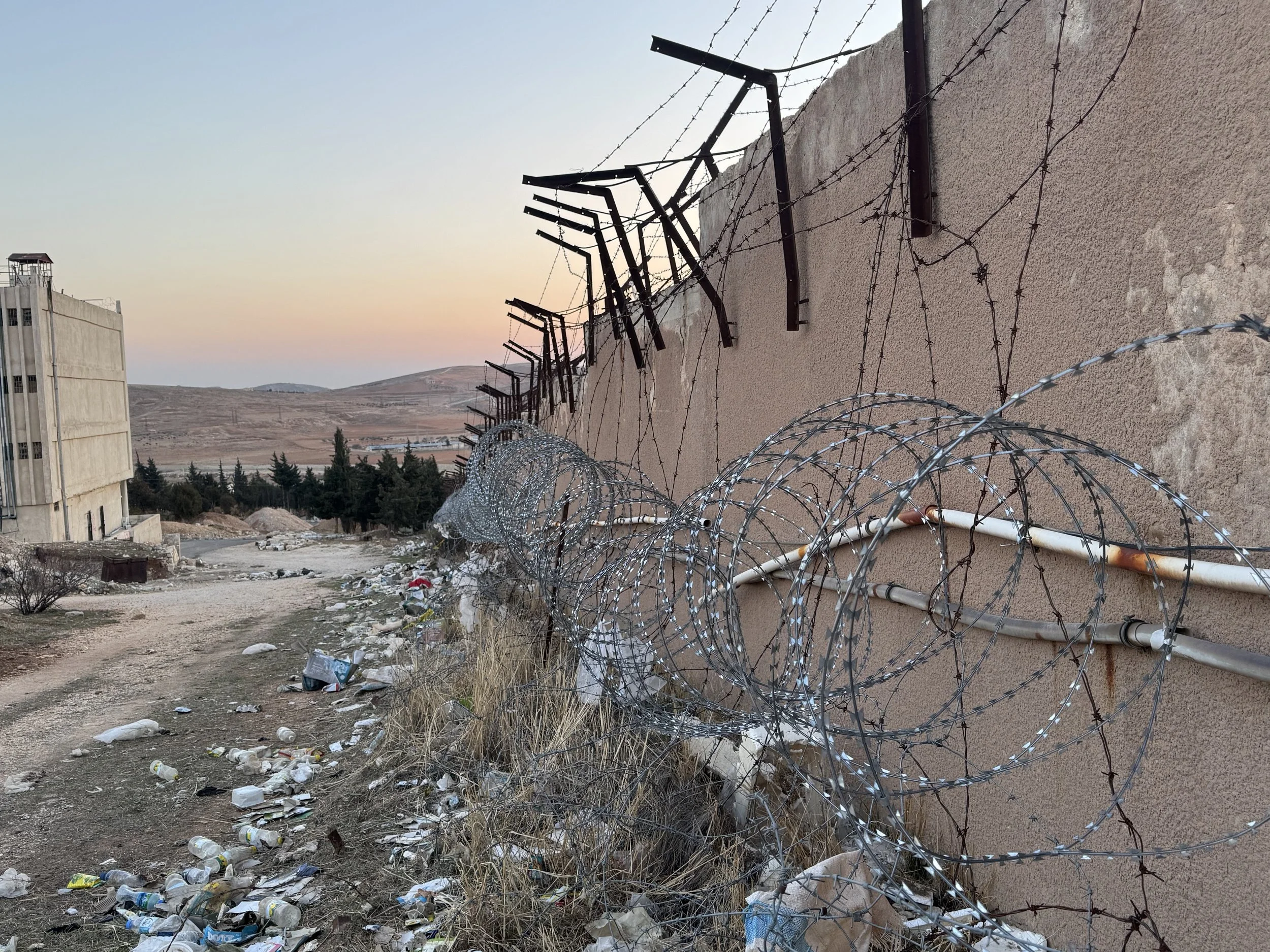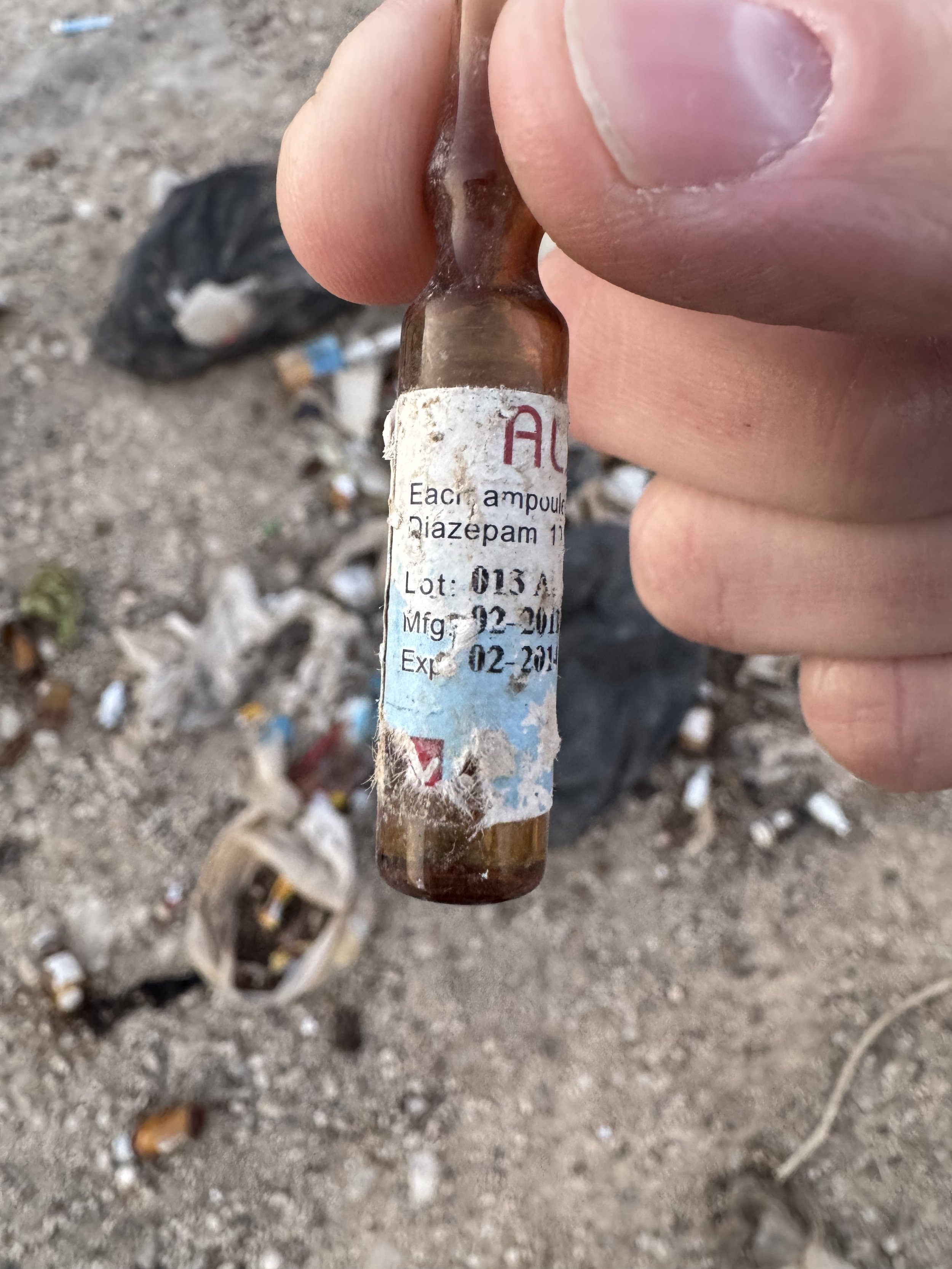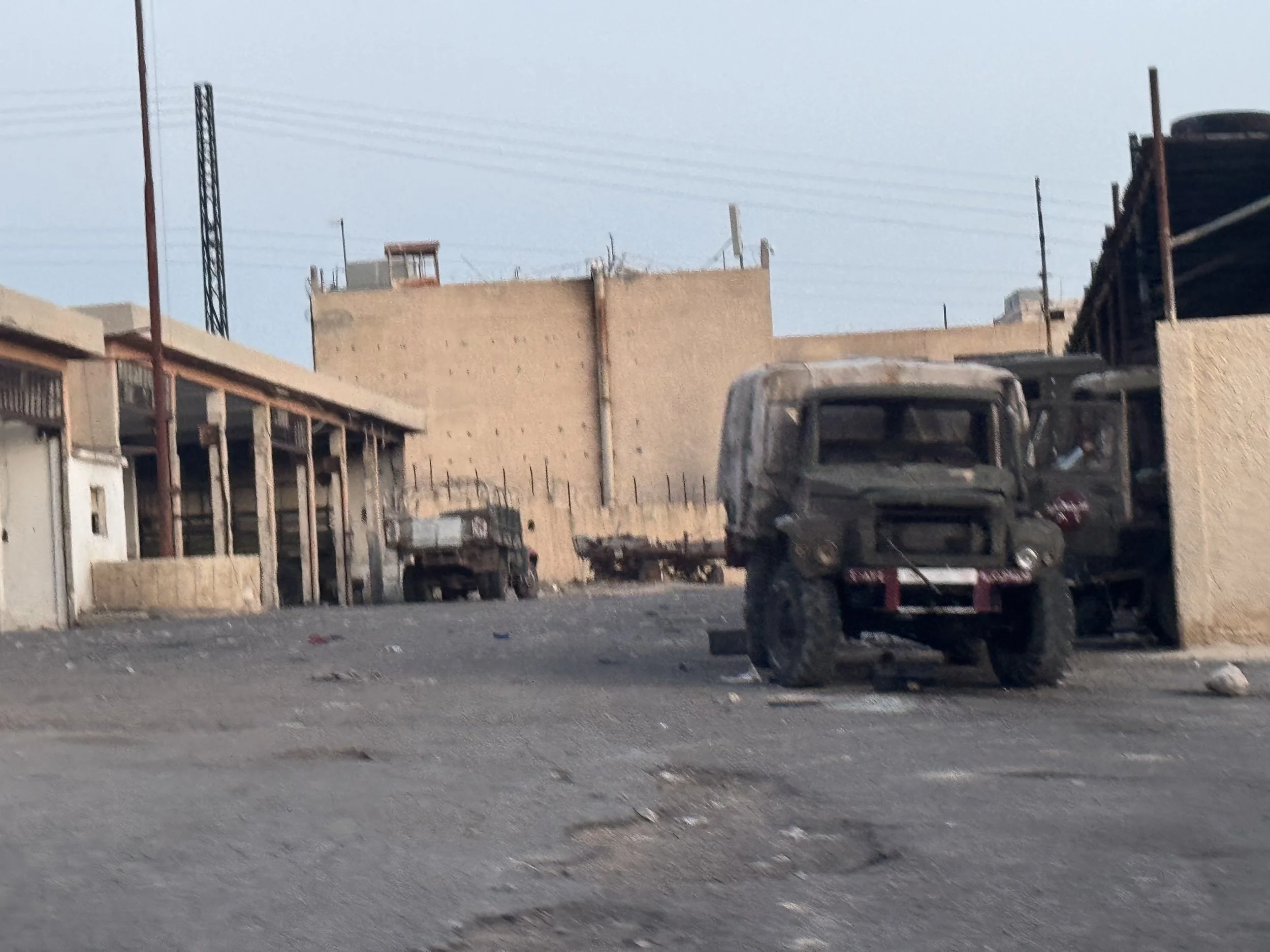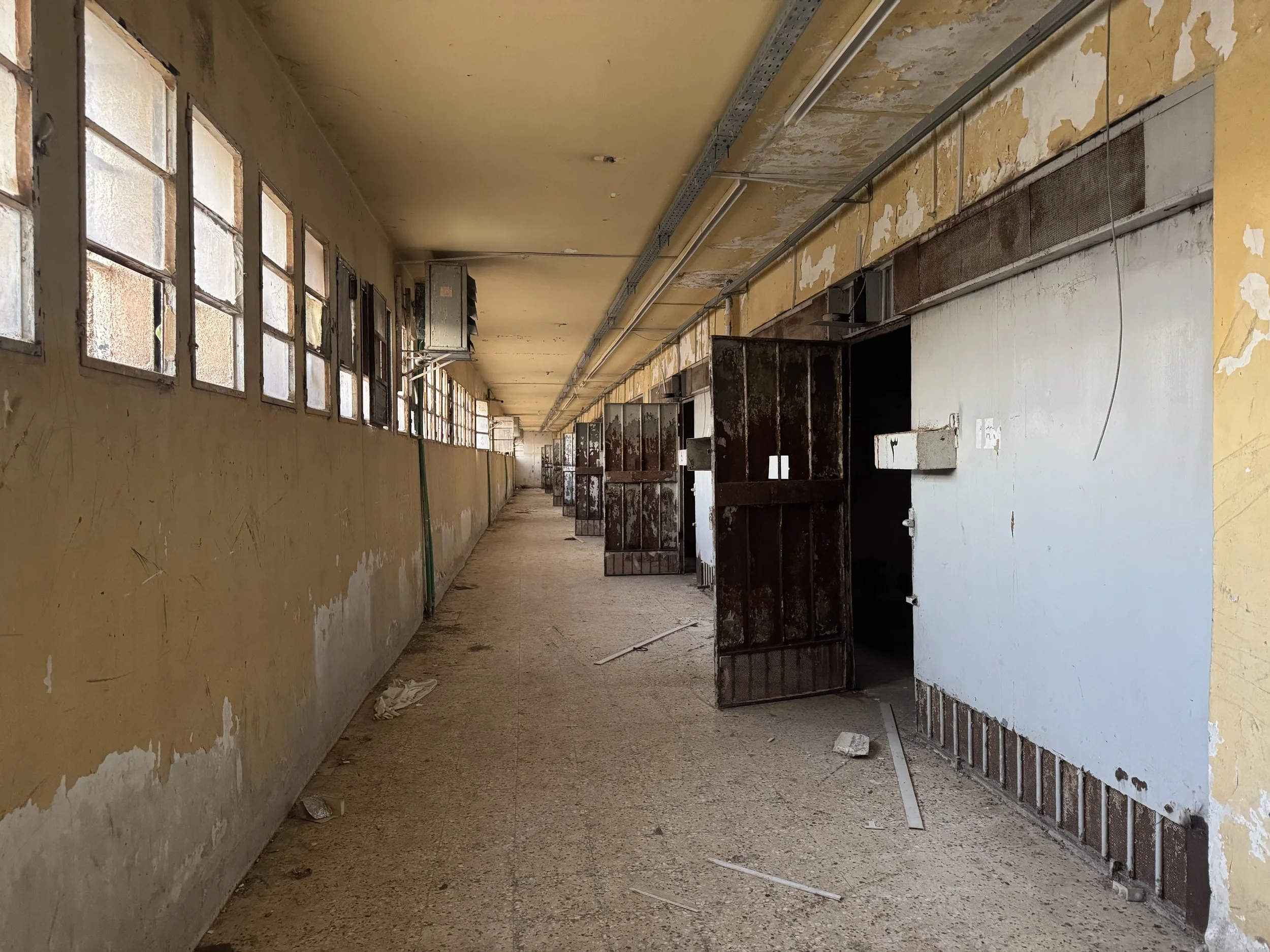Sednaya Prison
Touring a building known as the Human Slaughterhouse isn’t something I was looking forward to. We weren’t even sure it was possible, but Mike talked our guide into adding the stop on the way back to Damascus from the north of the country. Our guide in turn talked the guards at the gate into letting us in under the guise that we were journalist. Between the two of us, we had enough camera gear to look the part.
Side entrance to the prison that had been painted after fall of the government. The painting itself would have been enough to have one locked up in the prison just a few weeks beforehand.
The recently decommissioned/liberated military prison loomed in the rolling countryside, surrounded by fields on the outskirts of the town of Sednaya. The grounds around, and even inside the building itself, looked churned and torn, having been partially excavated due to rumors there were underground cells holding trapped prisoners. Trenches crisscrossed the prison yard, and inside great chunks of the concrete floor had been excavated. According to our guide, no hidden or buried cells had been found, though it wasn’t for a lack of trying or searching. Turking symbols were spray painted around the grounds and on the buildings, signs that Turkish sappers had assisted in clearing the prison of boobytraps.
Exterior of the prison
This was the main prison for political dissidents, but it didn’t discriminate in who it imprisoned, tortured and killed. It didn’t take much to get locked up here, either, just the wrong word said in the wrong company could be all it took to get dragged away here in the middle of the night, with family and friends left to wonder if they would ever see their loved ones again. It was a house of horrors, a sobering hellscape, and a tribute to the worst part of human nature. There’s hope of turning the grounds in to a museum and memorial to chronical what happened and honor those who perished there, much like the Tuol Sleng Genocide museum in Cambodia. It’s a reminder of the endless capacity of humans to inflict horrors on each other, something that seems more of a permanent feature of humanity rather than an outlying paroxysm.
Destroyed troop carrier
Holding pins where people were kept during the initial intake, sometimes for several days. Standing room only and the larger room was littered with trash, personal belongings, and even prosthetic limbs the inmates were not allowed to wear or keep.
One of the larger cells where dozens of people were imprisoned
Inside of the prison, a central staircase stands.
Prison yard
View from one of the guard towers
Collection of various drugs left behind in a trash pile, sedatives and antibiotics and antiparasytic meds
Prison interior courtyard
Trench dug in the prison yard.
Interior hall outside the prison cells.
Another angle of the troop carrier
We ended the day back at the hotel, arriving after dark in a rather somber mood. Tomorrow, we head south of the city to tour a different type of ruins.


